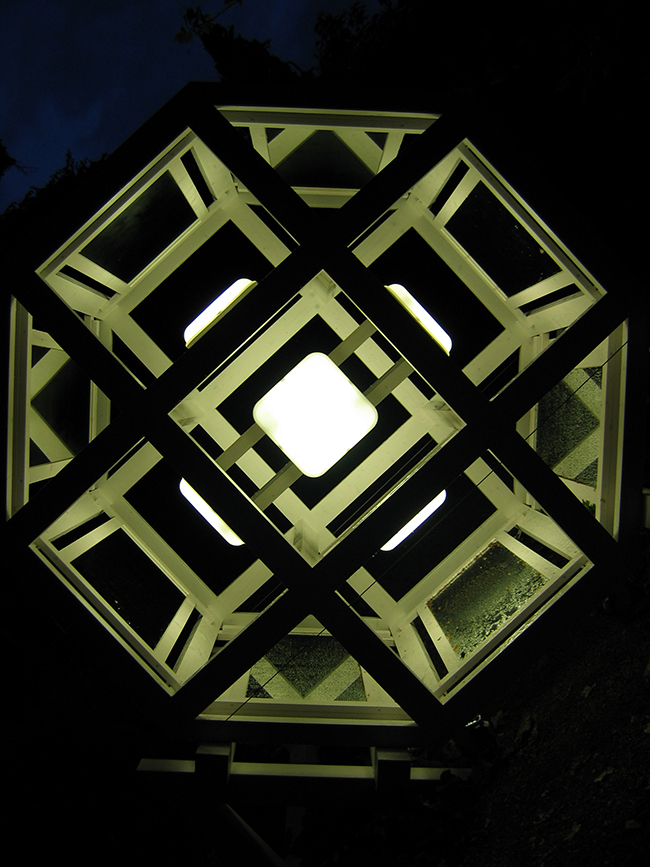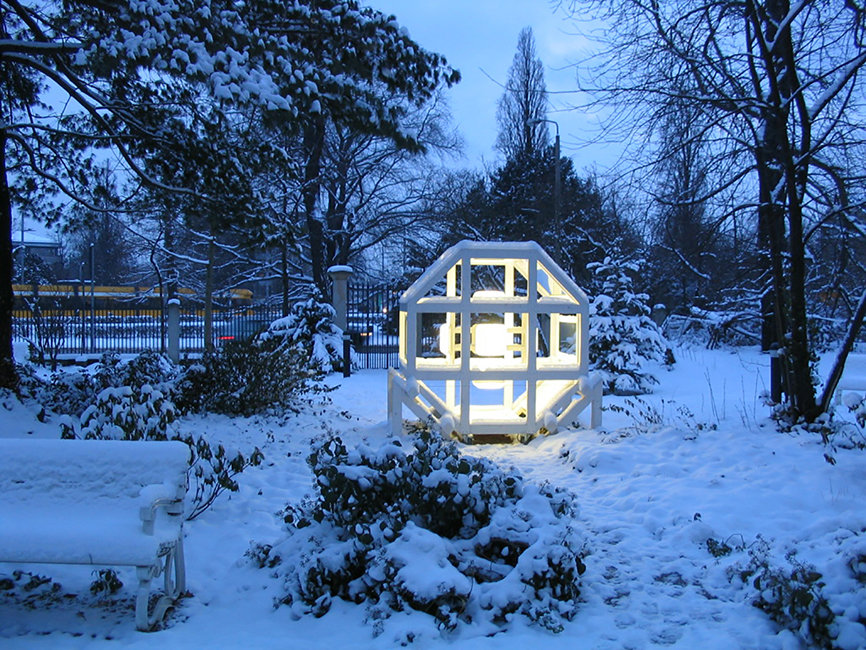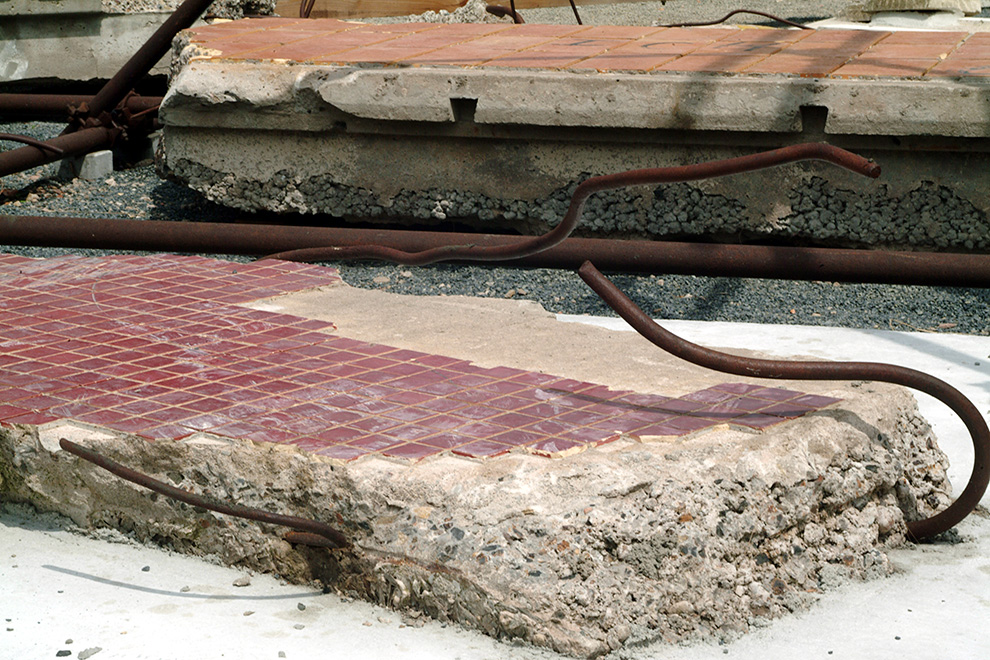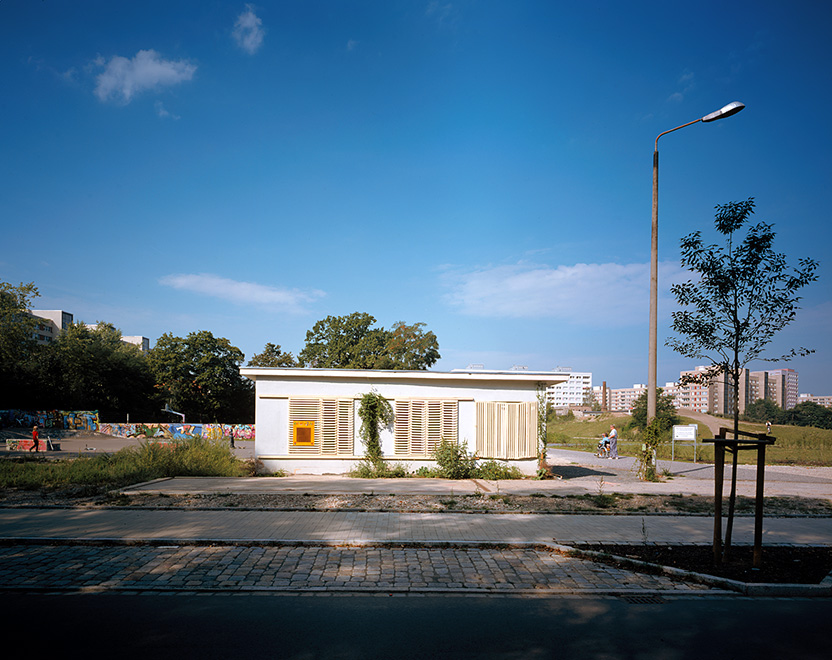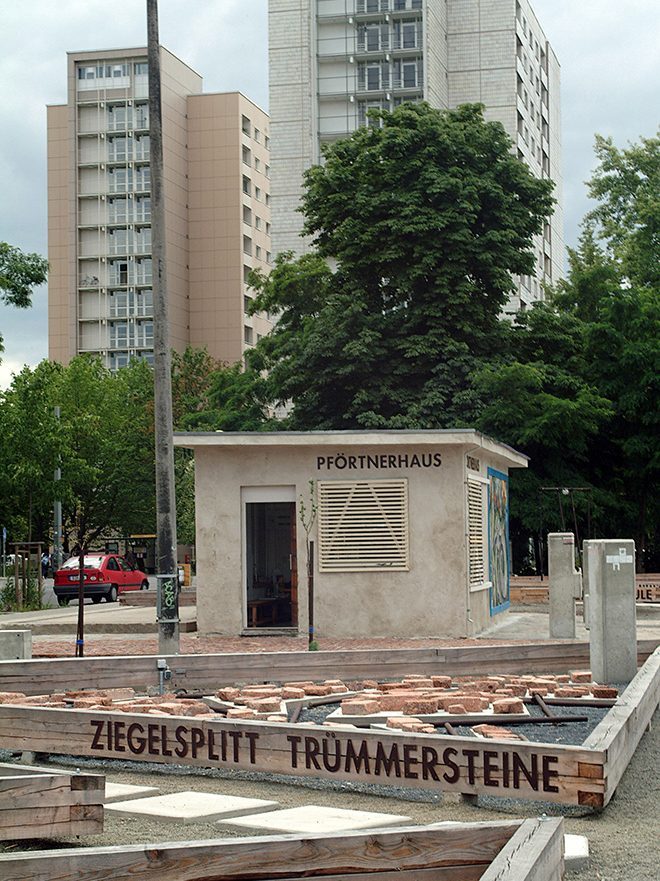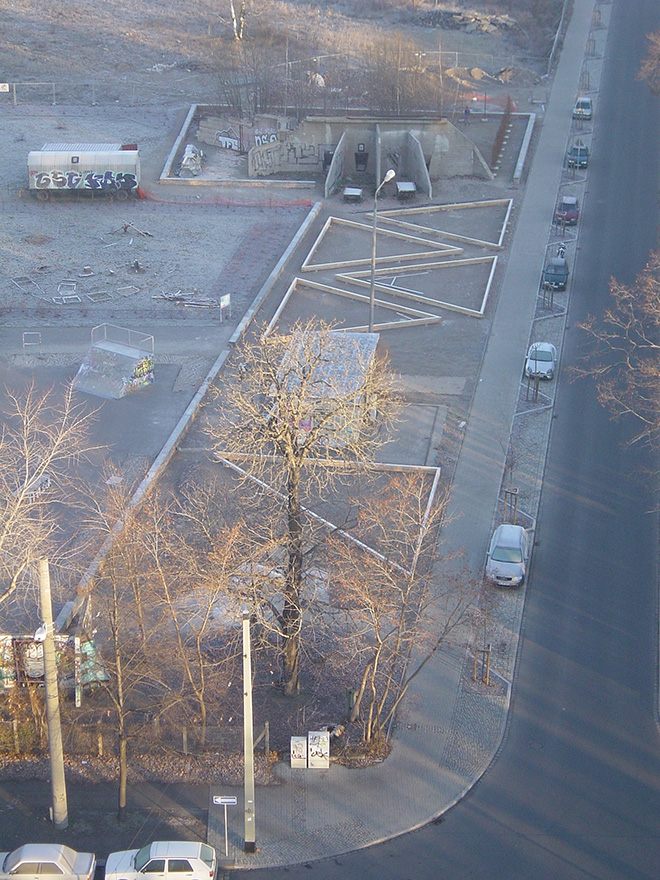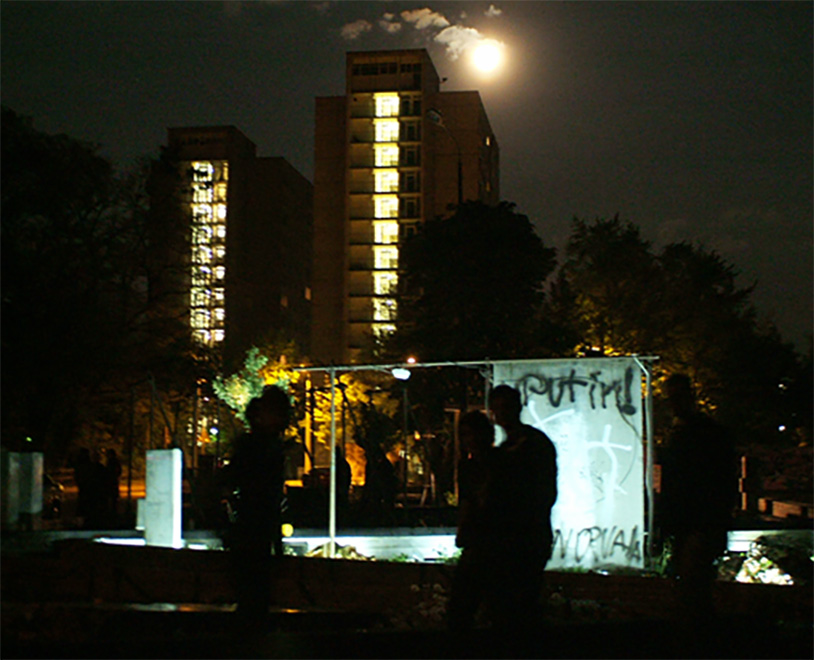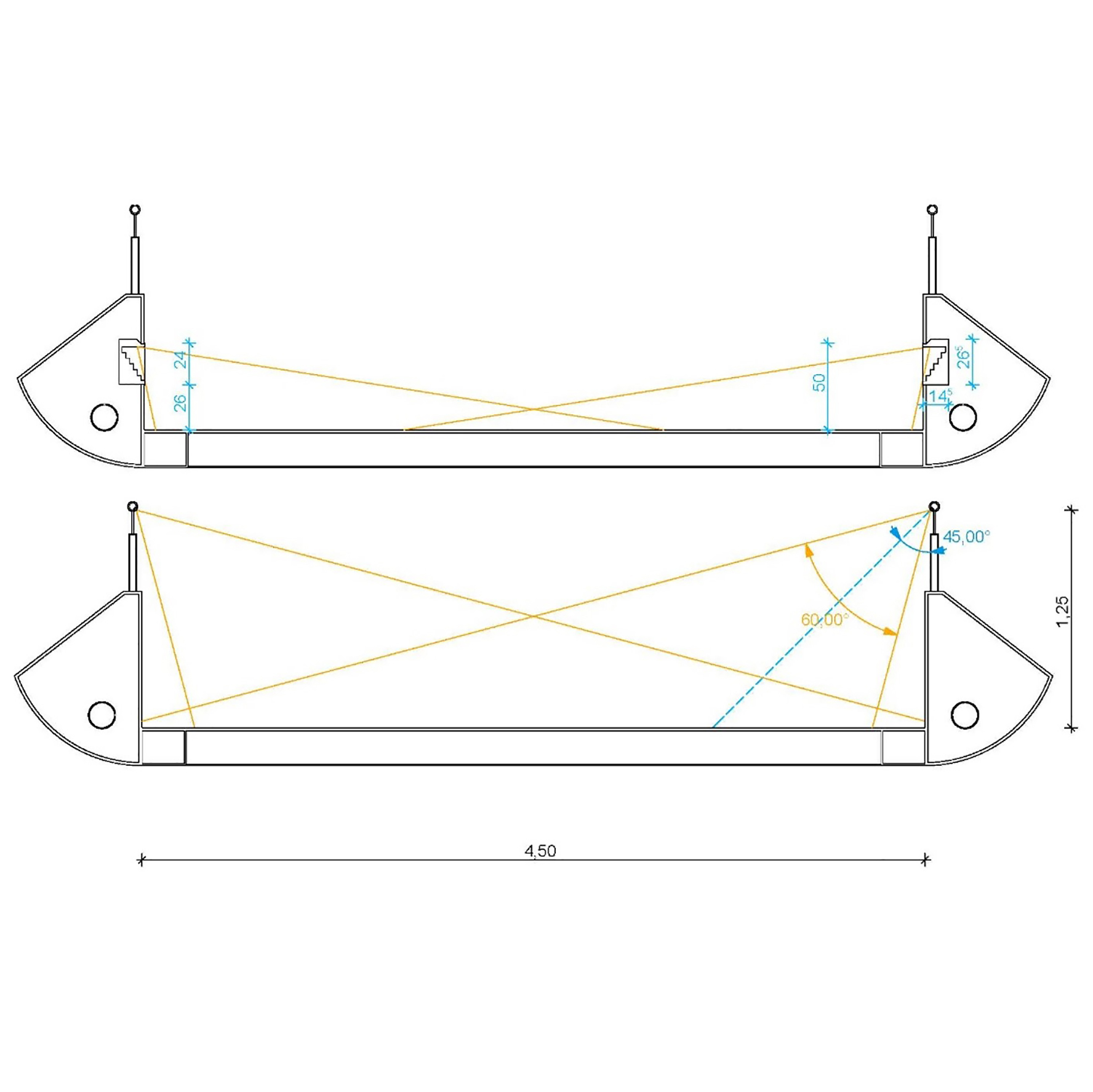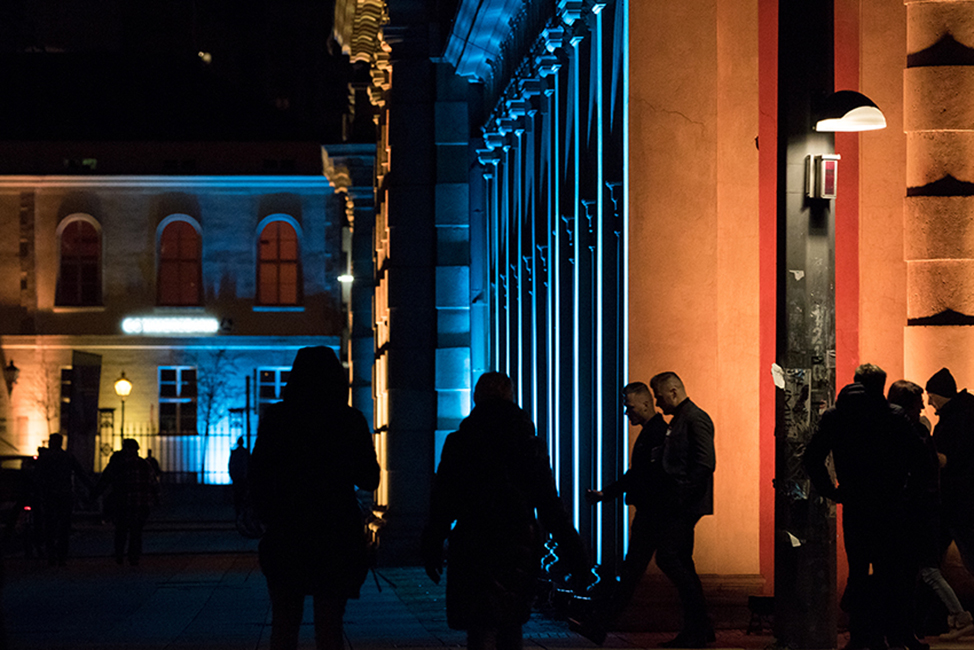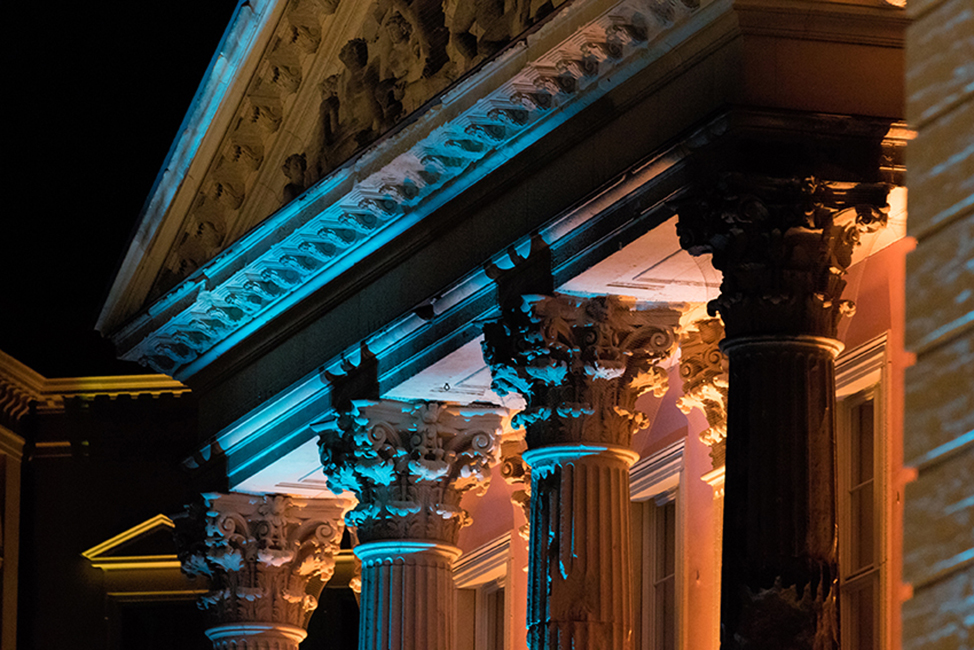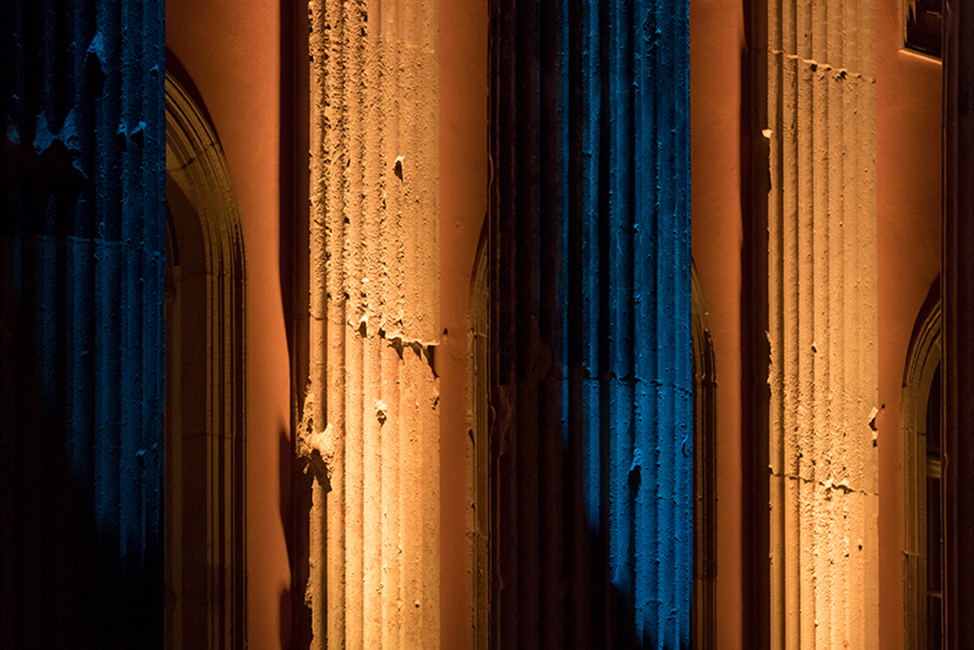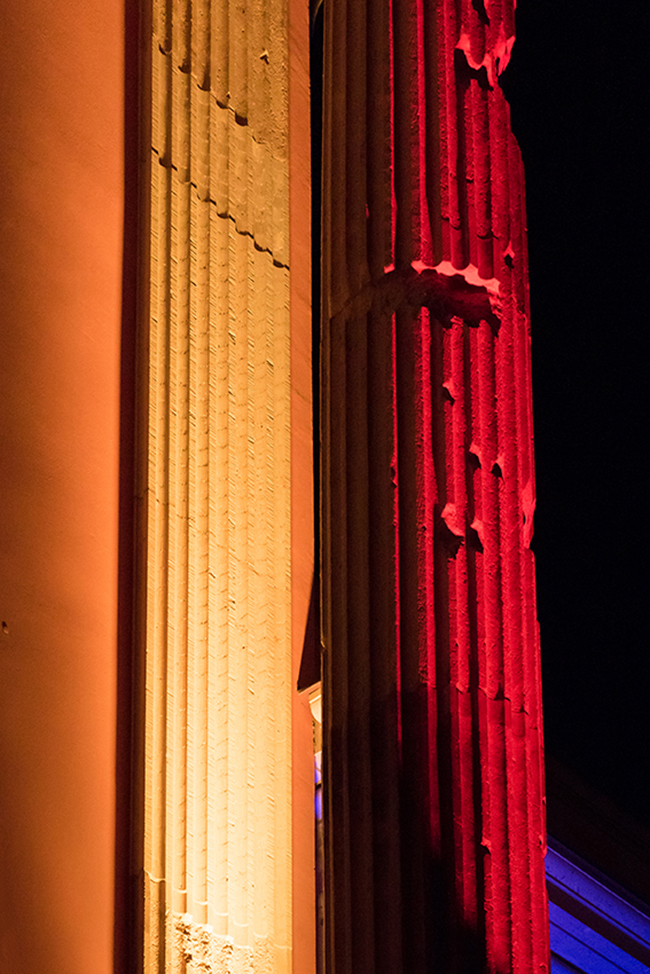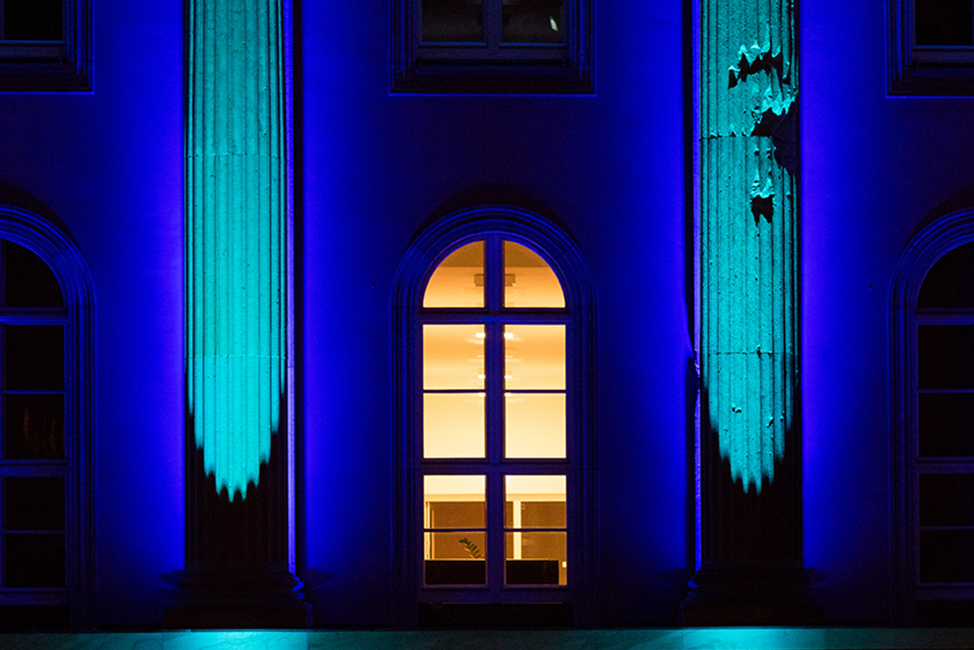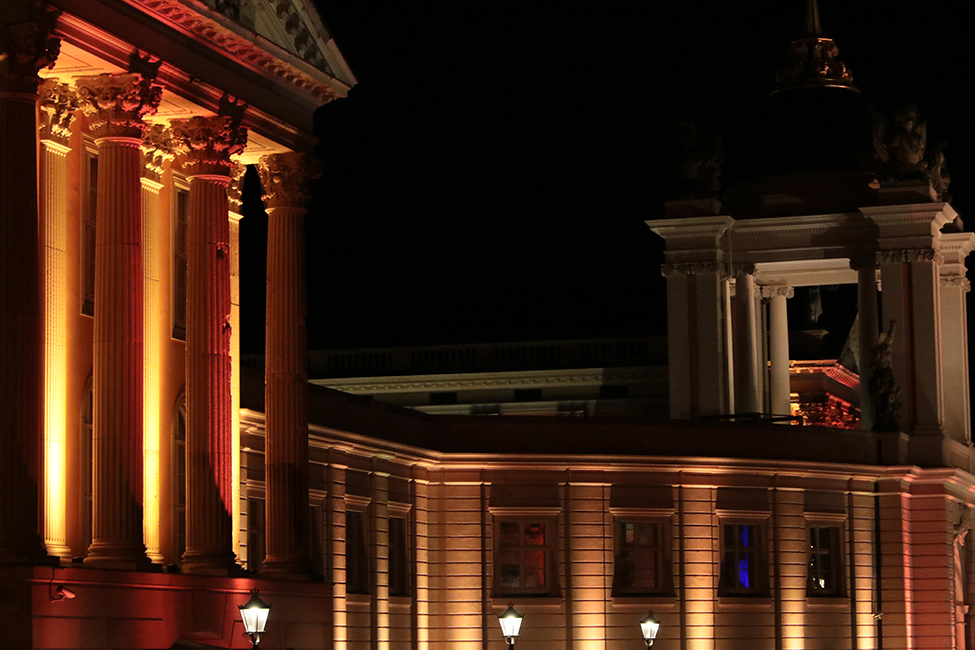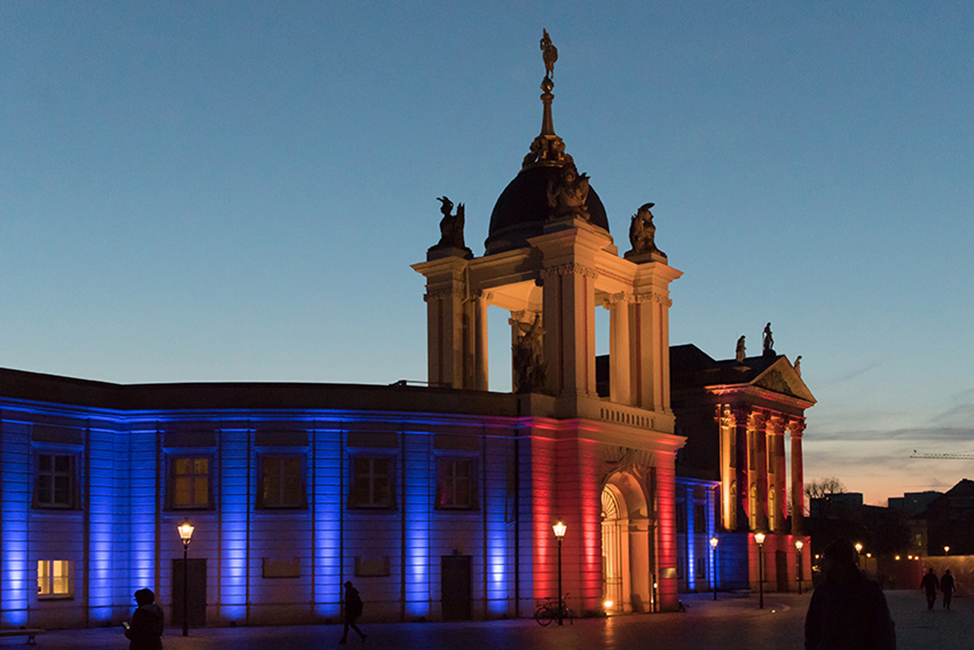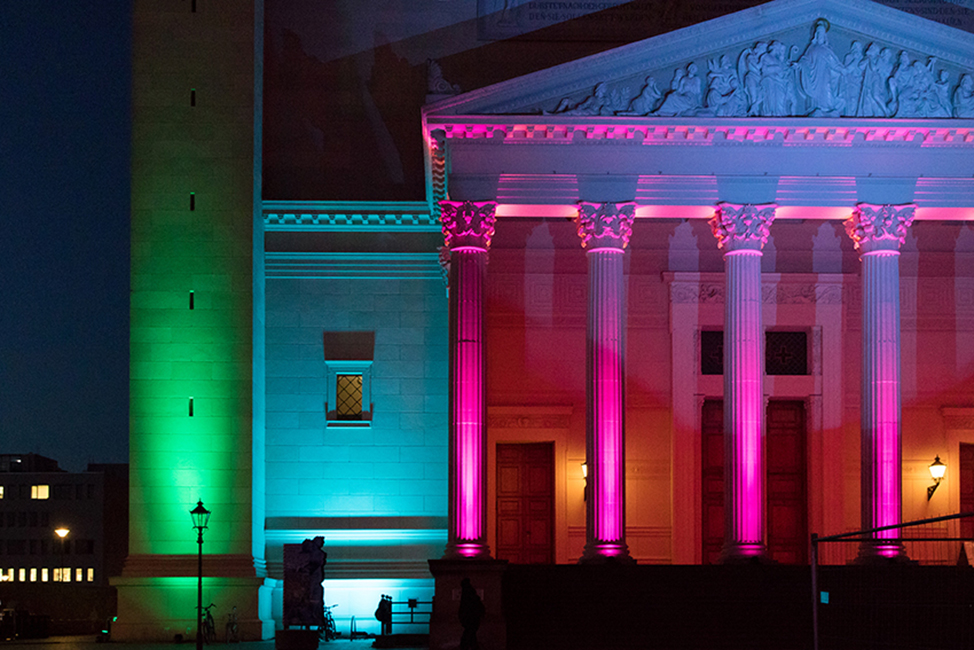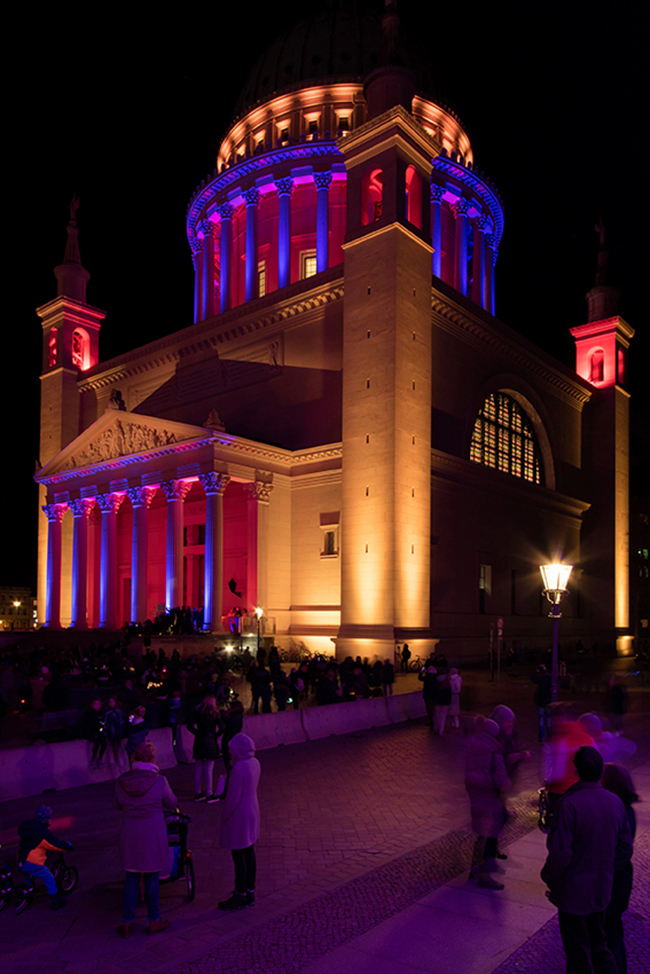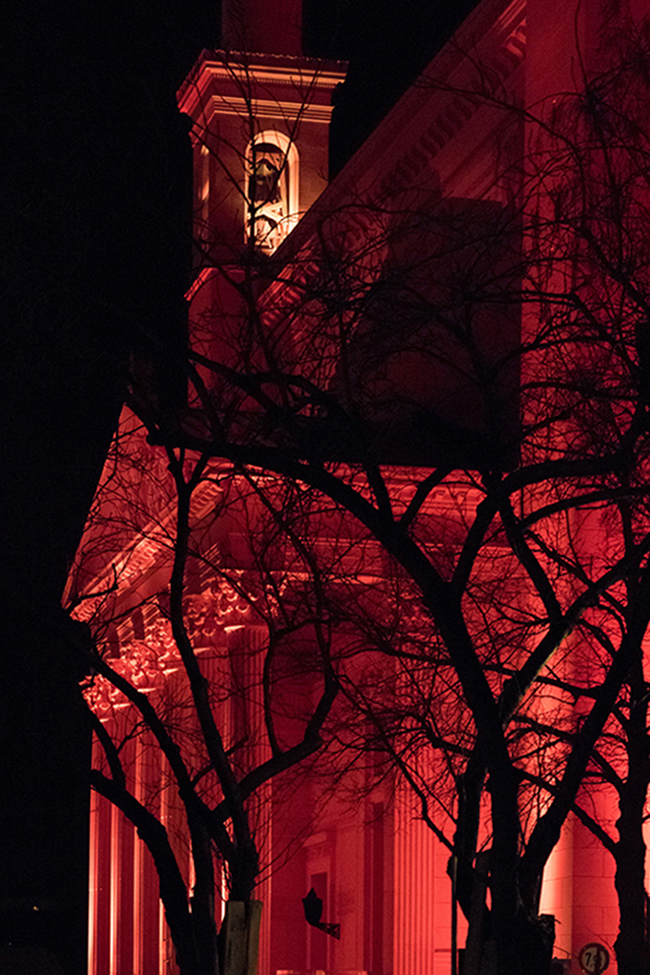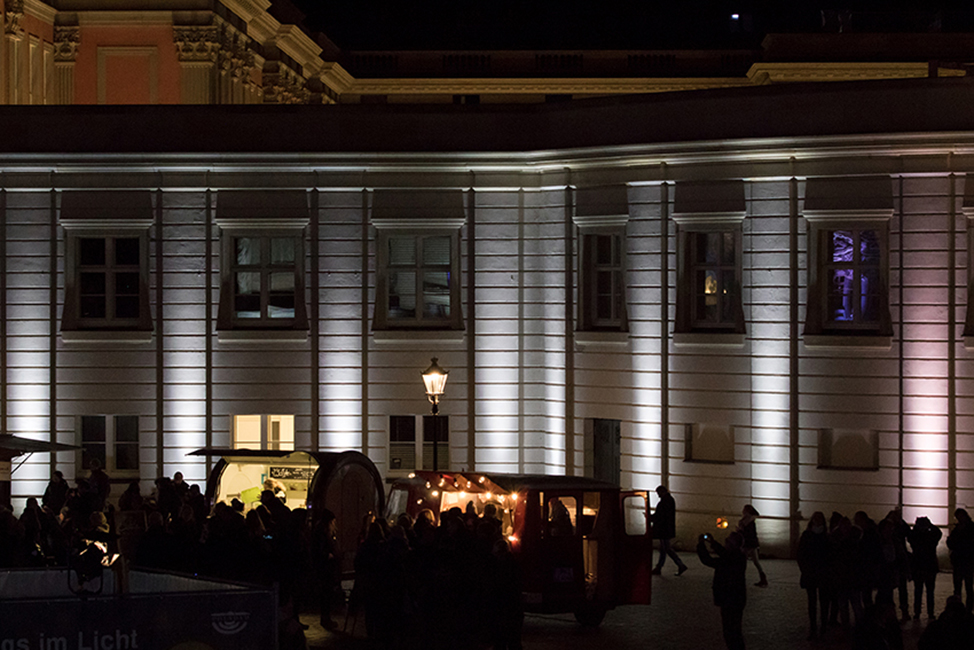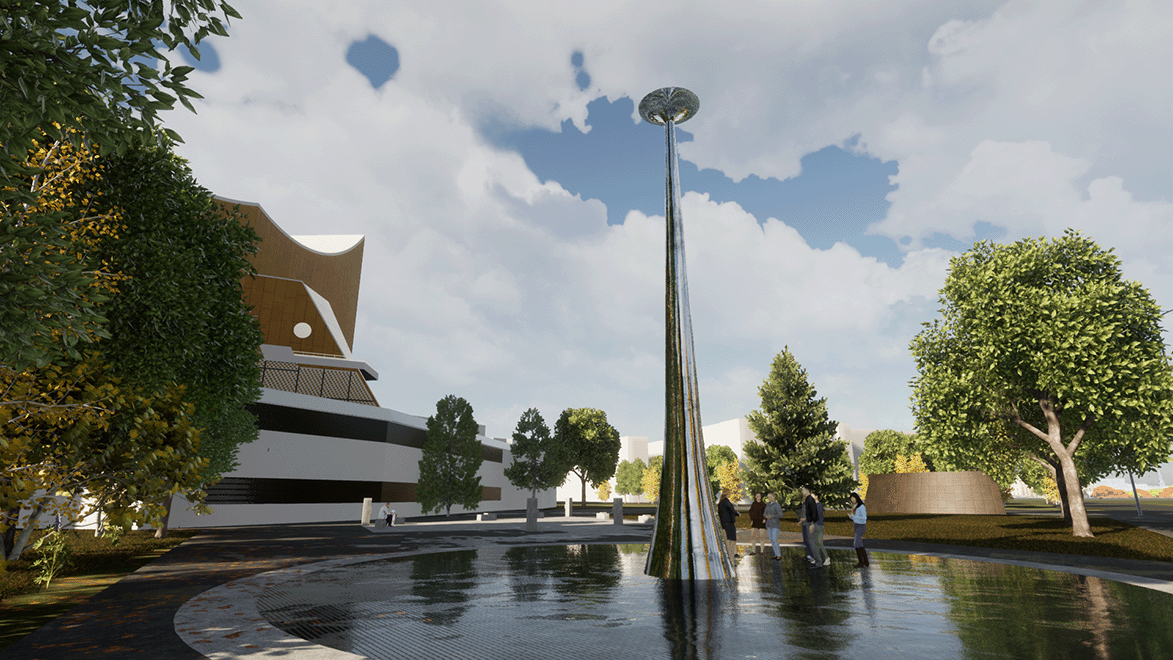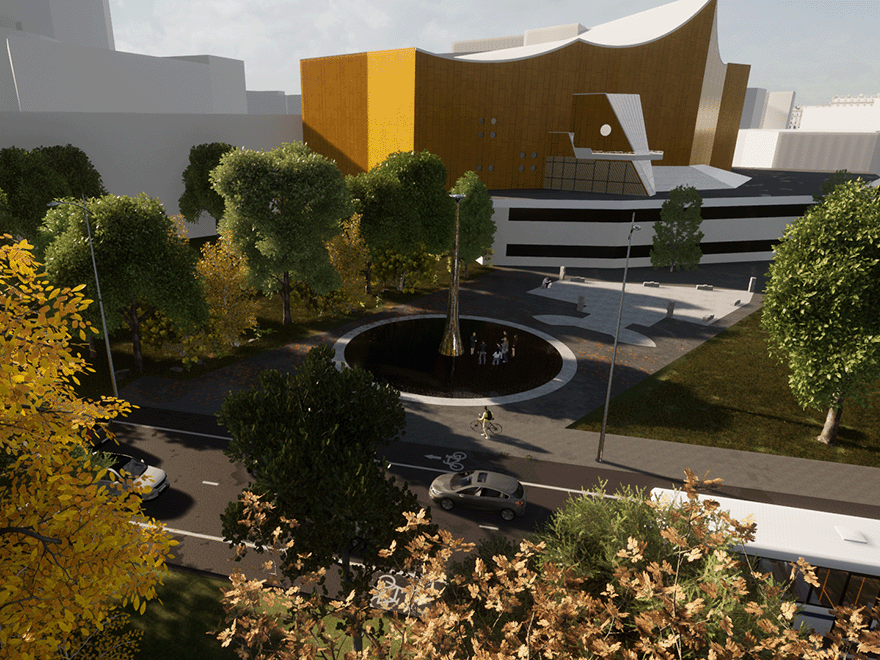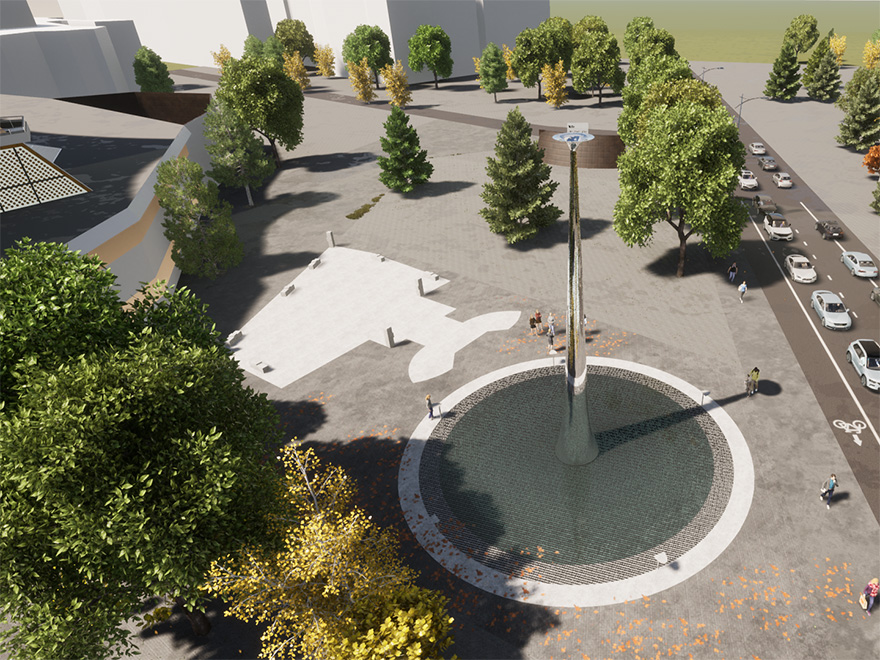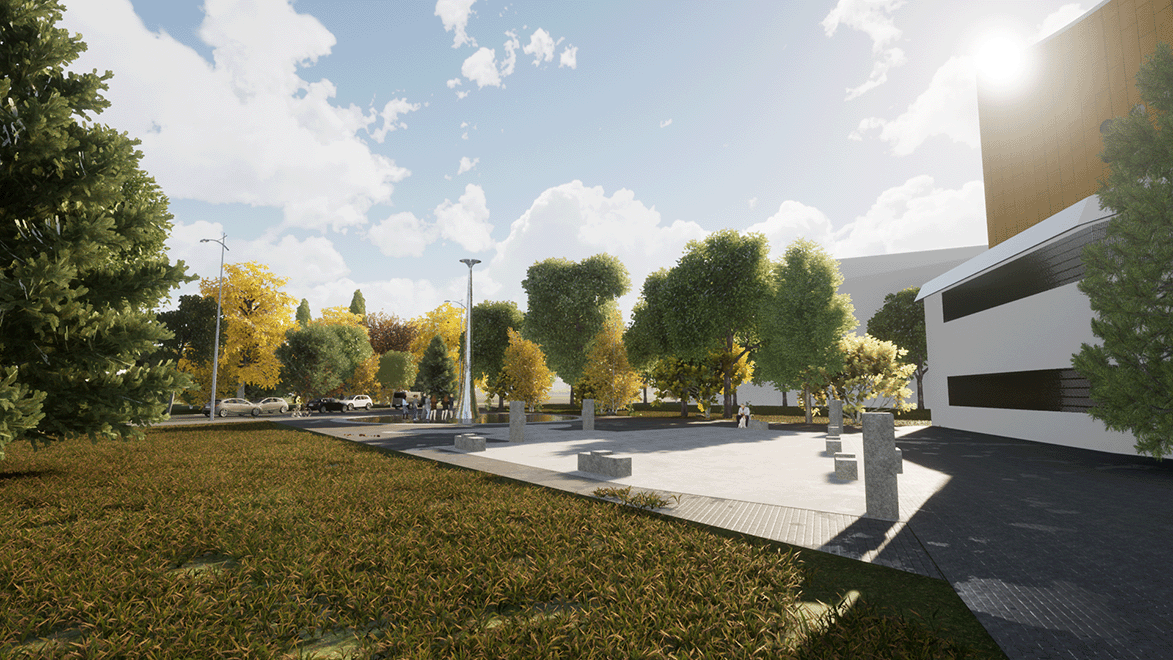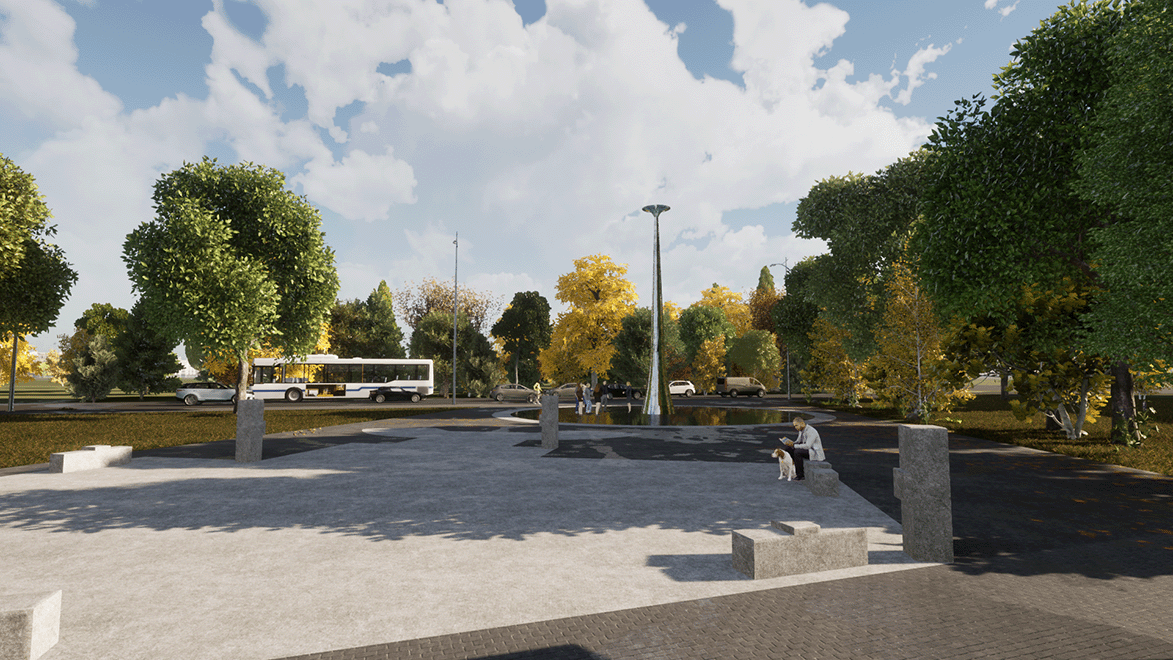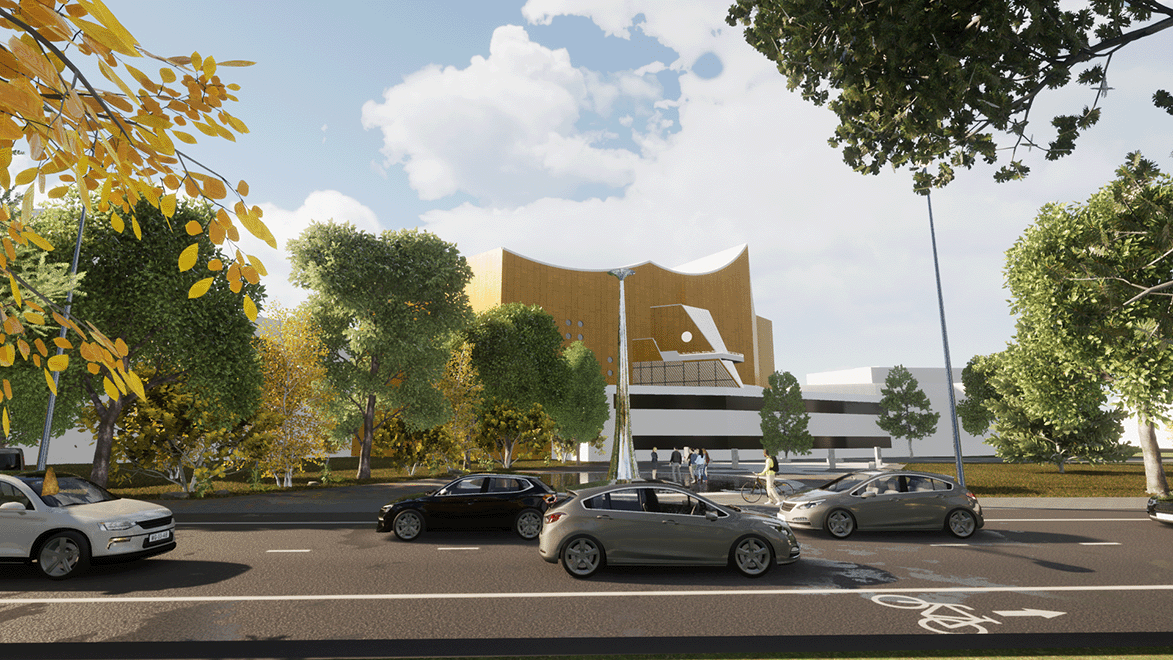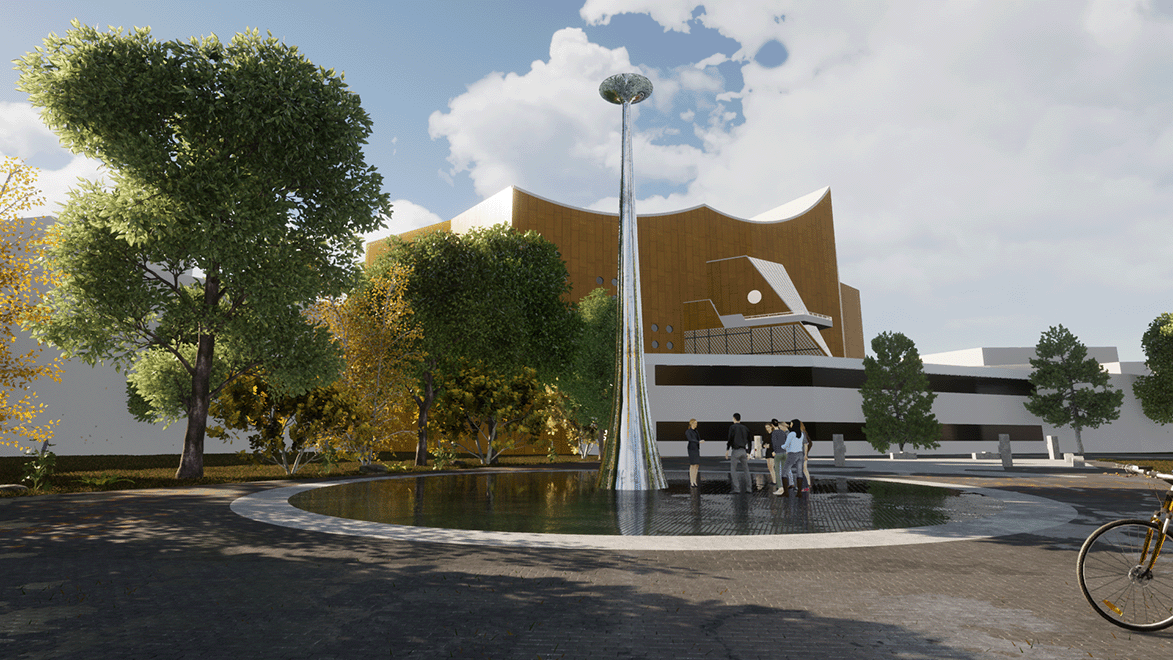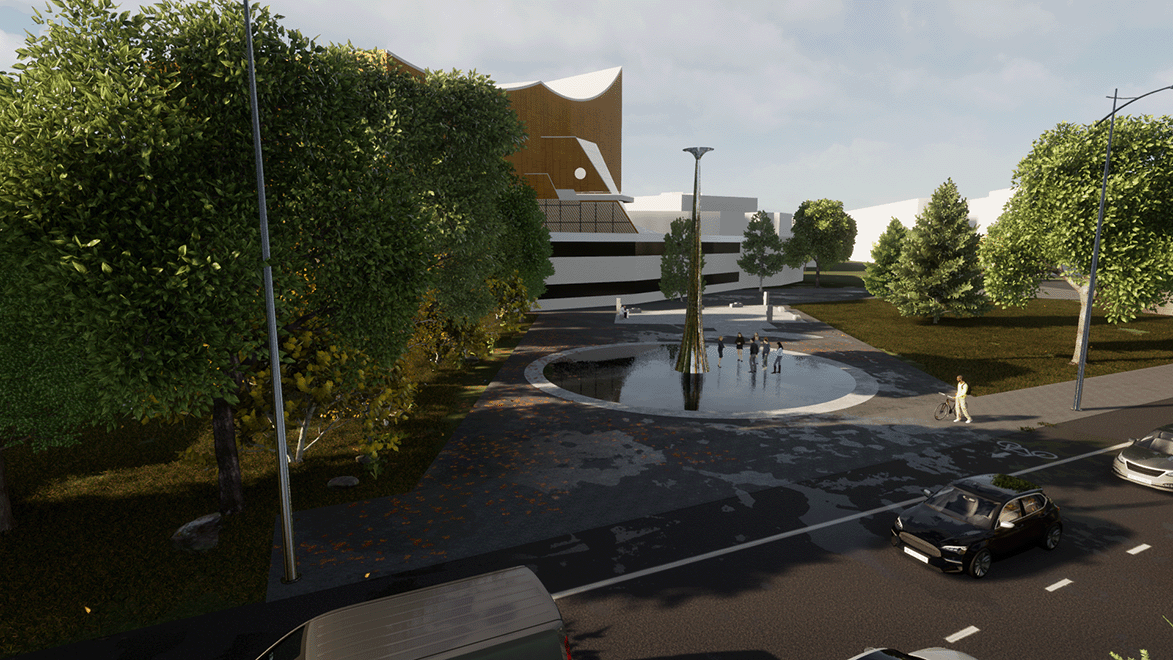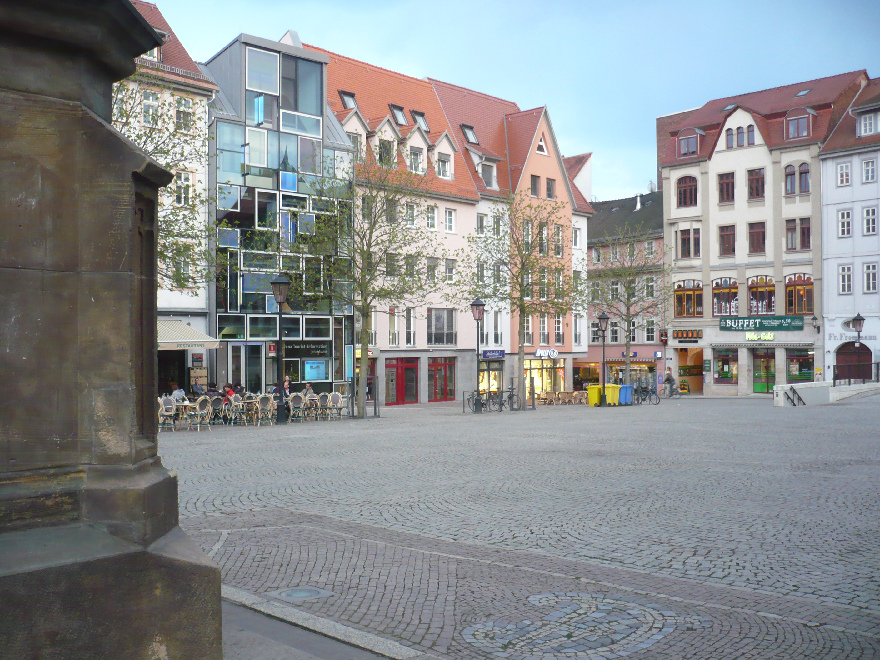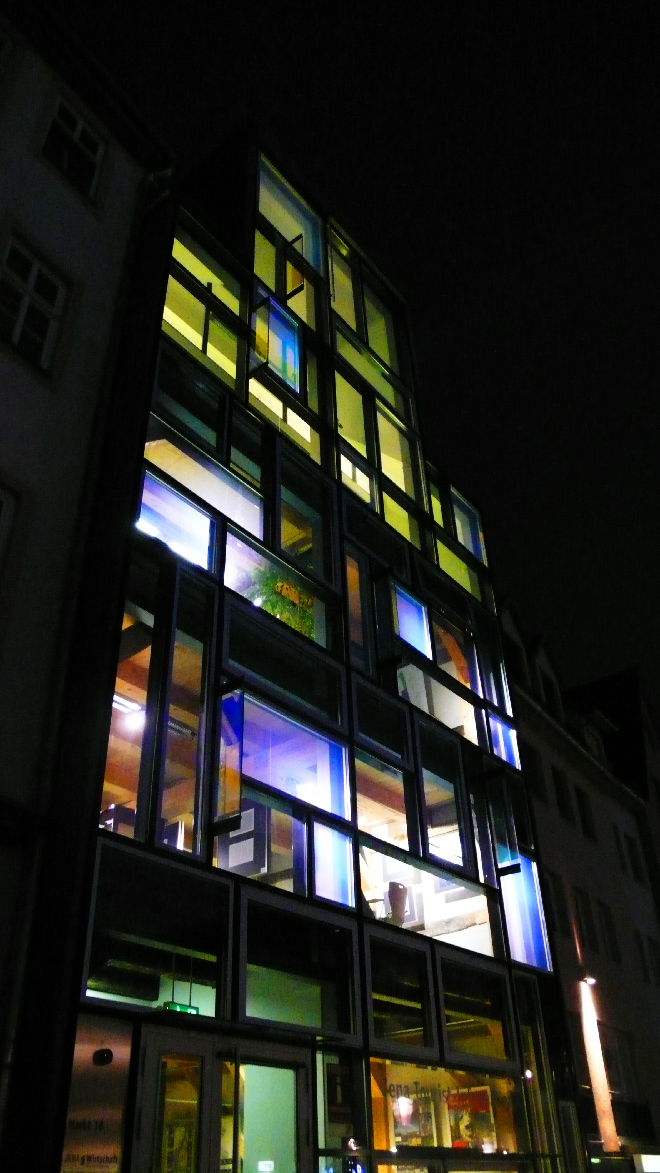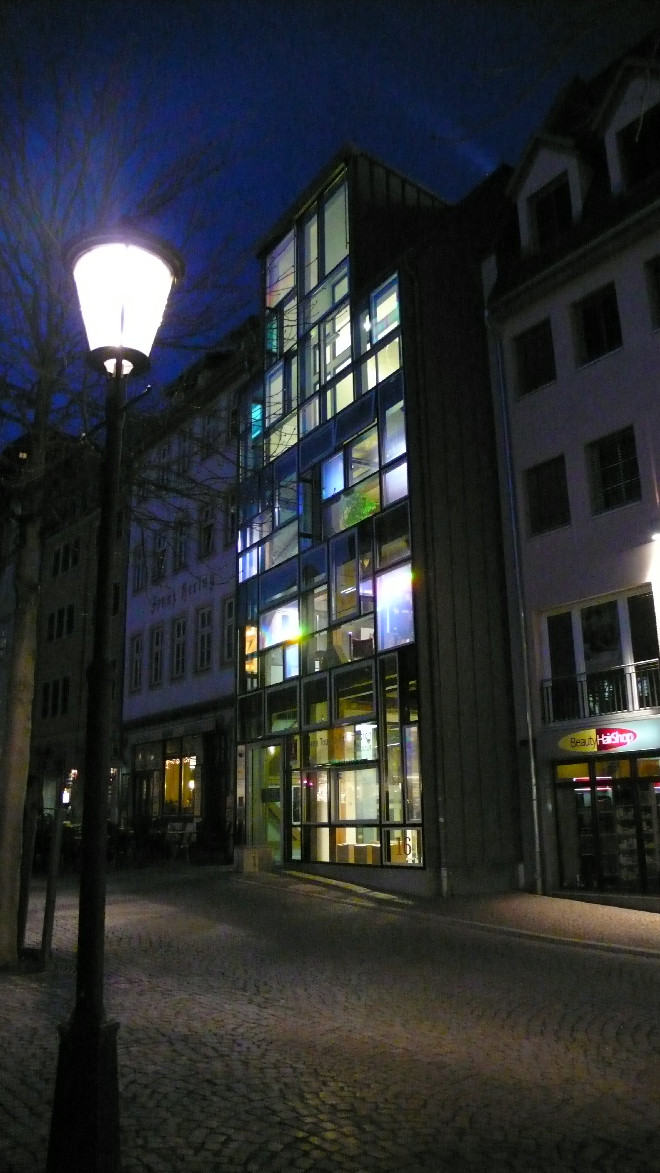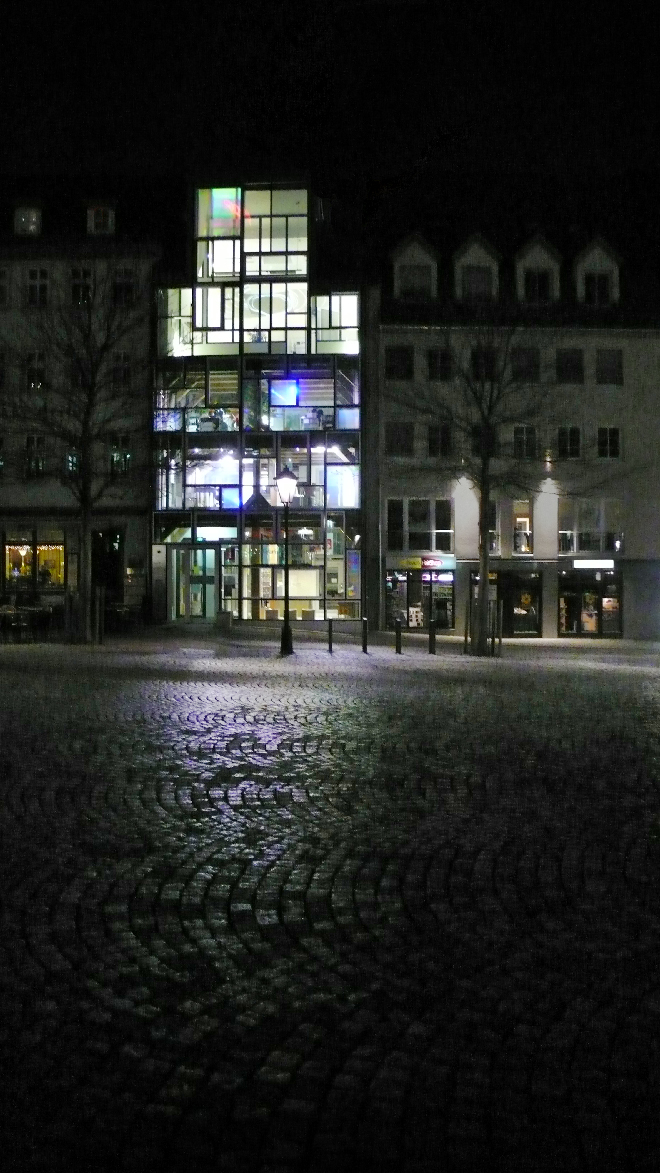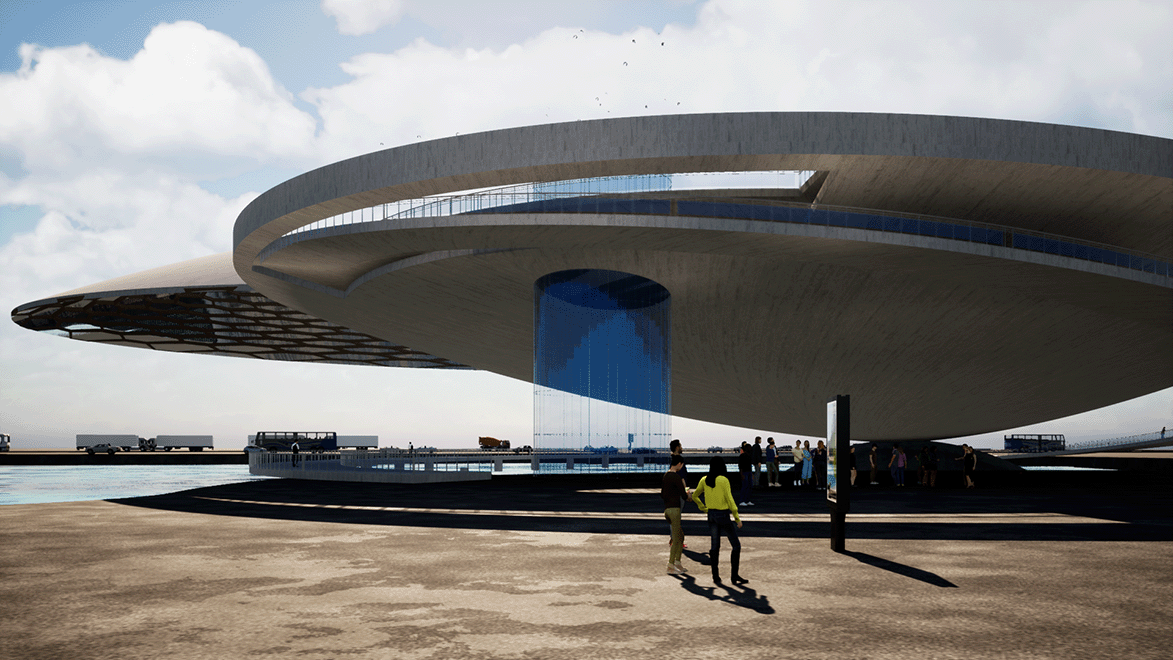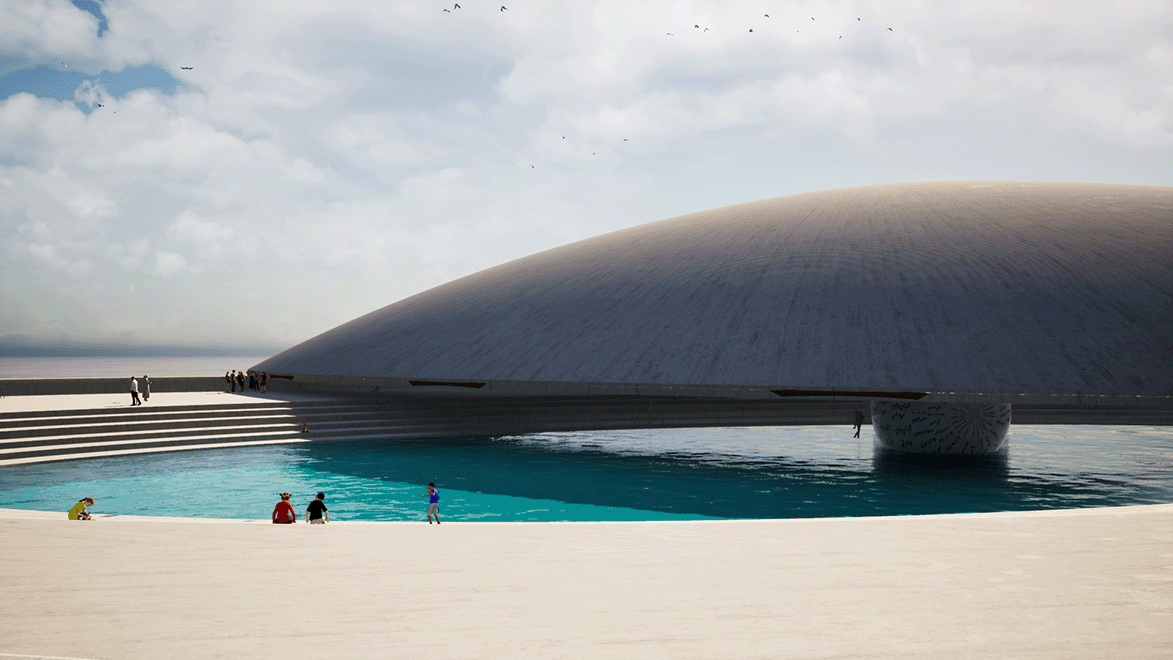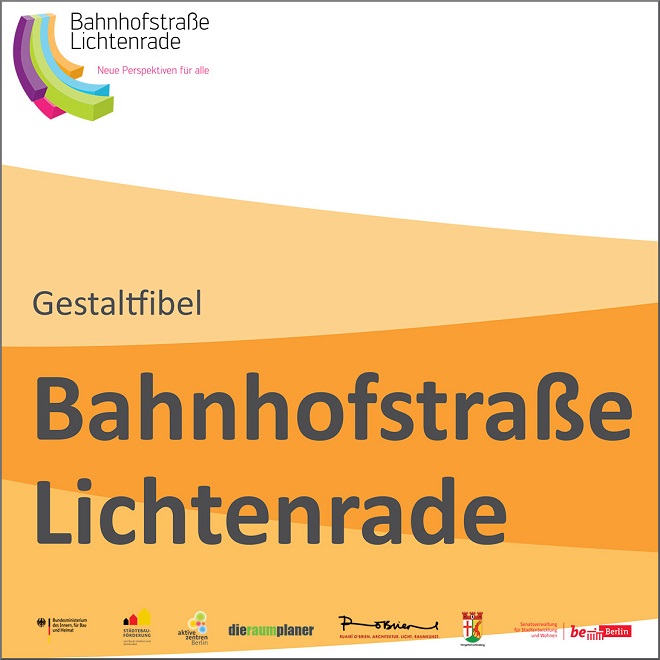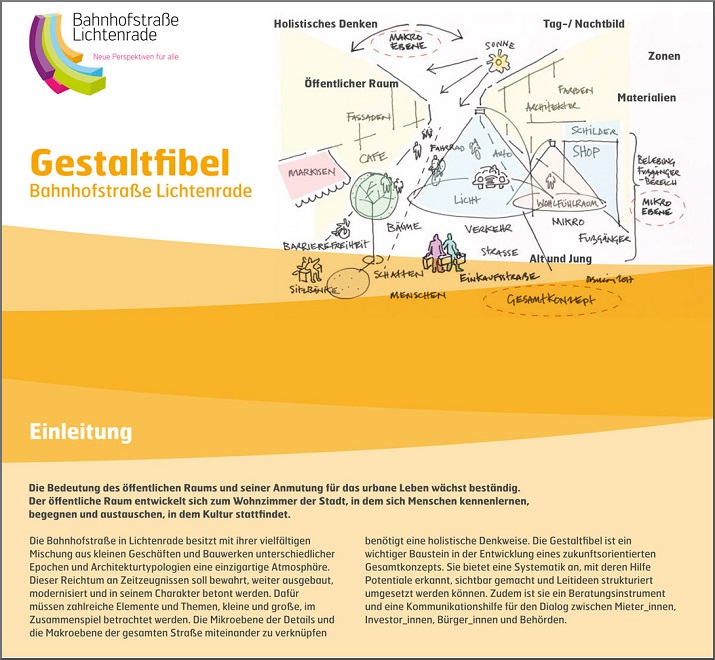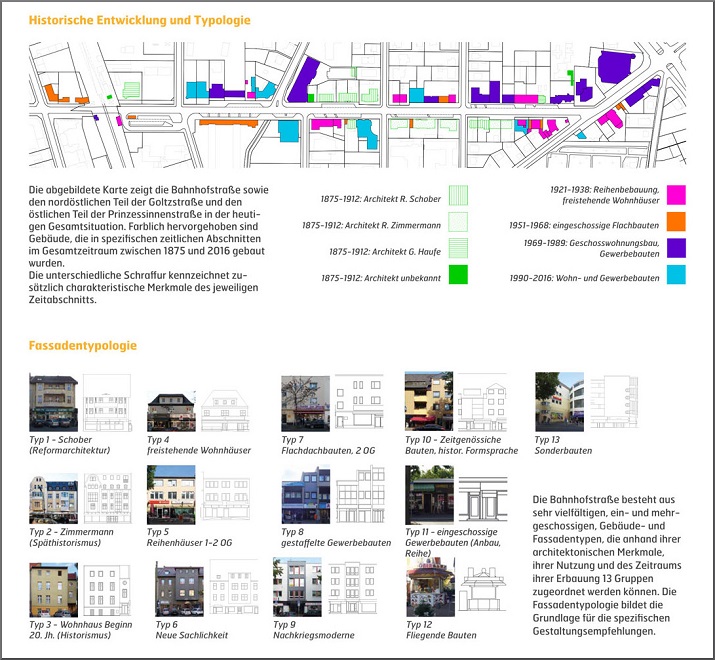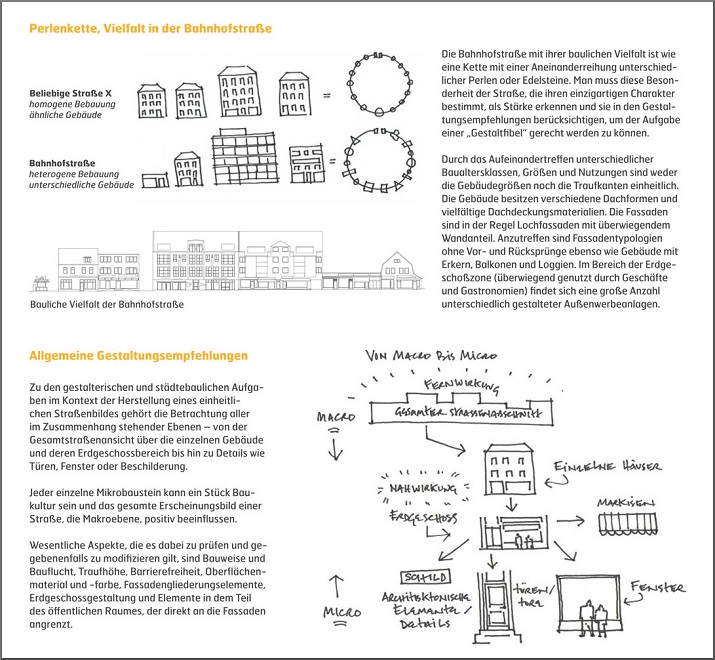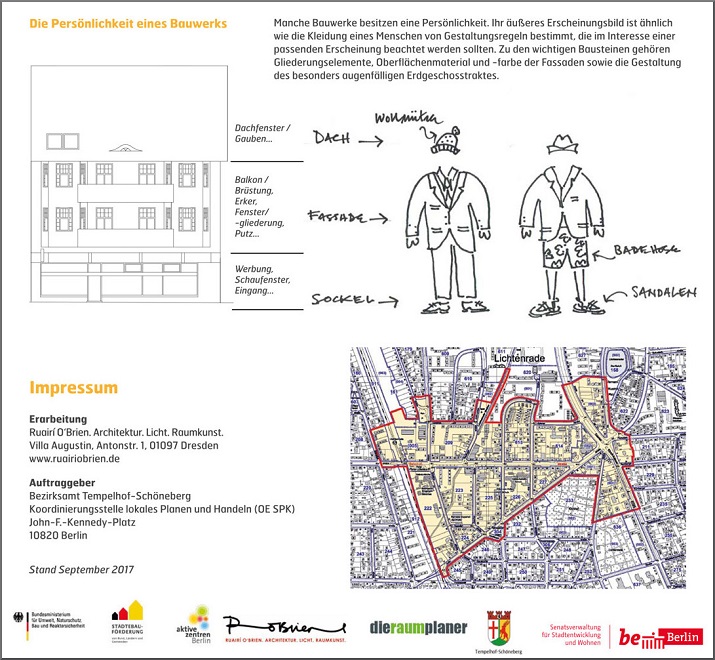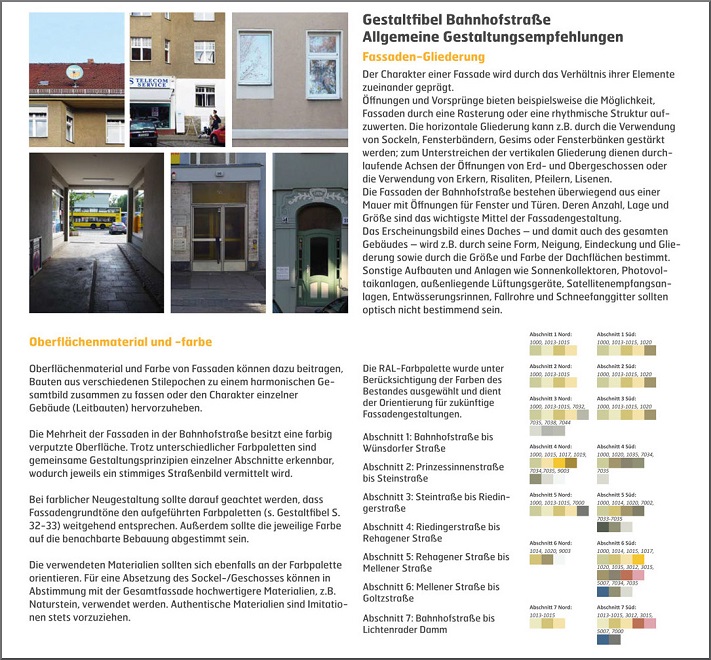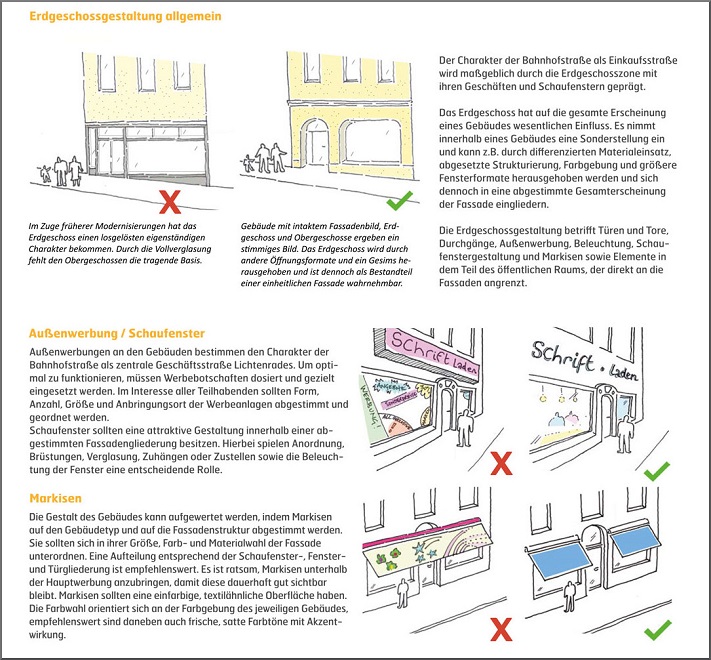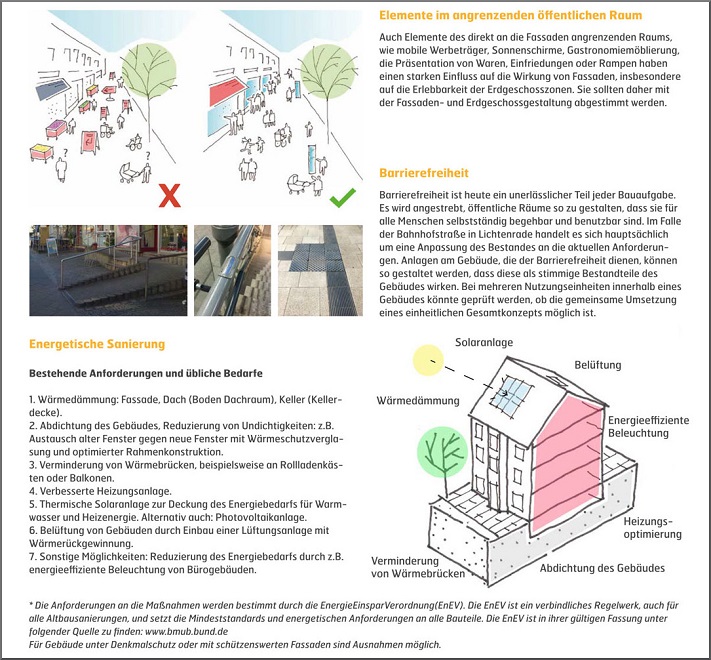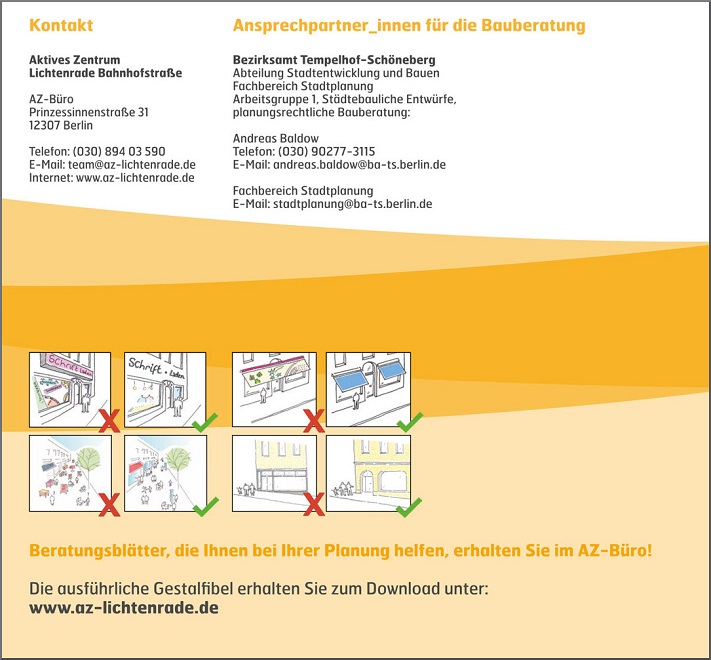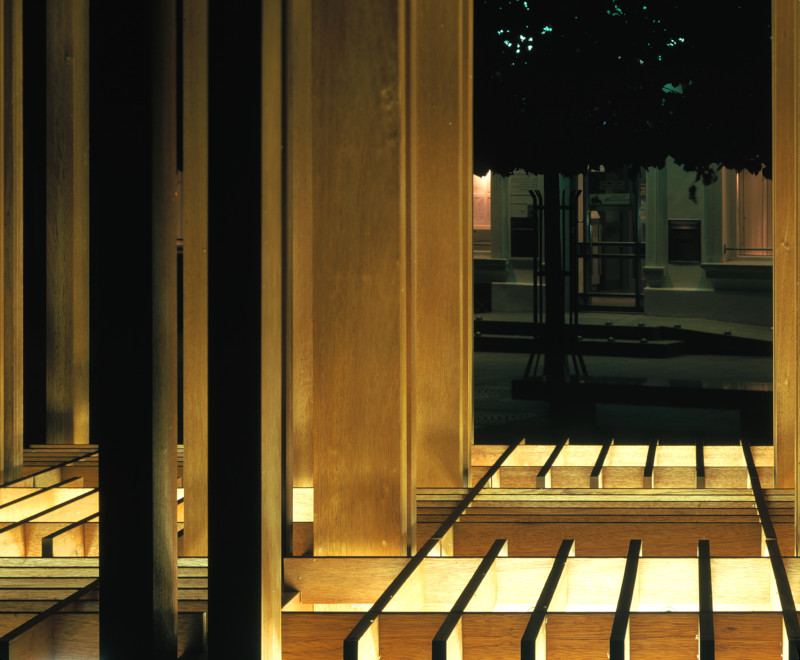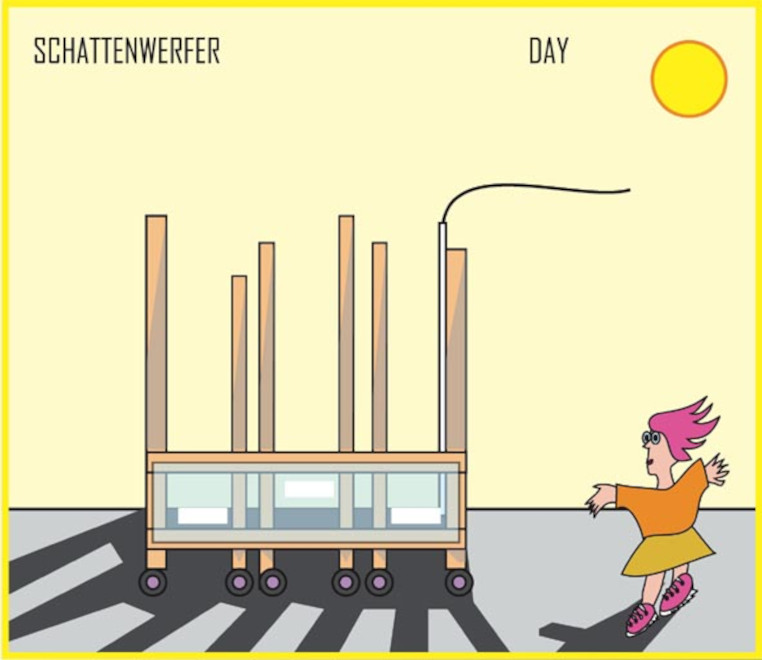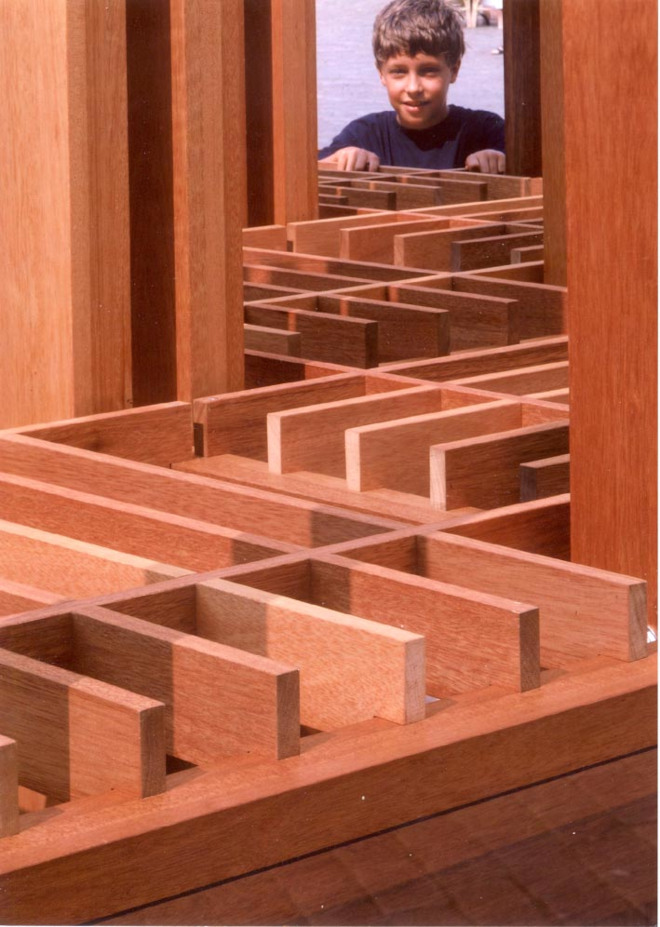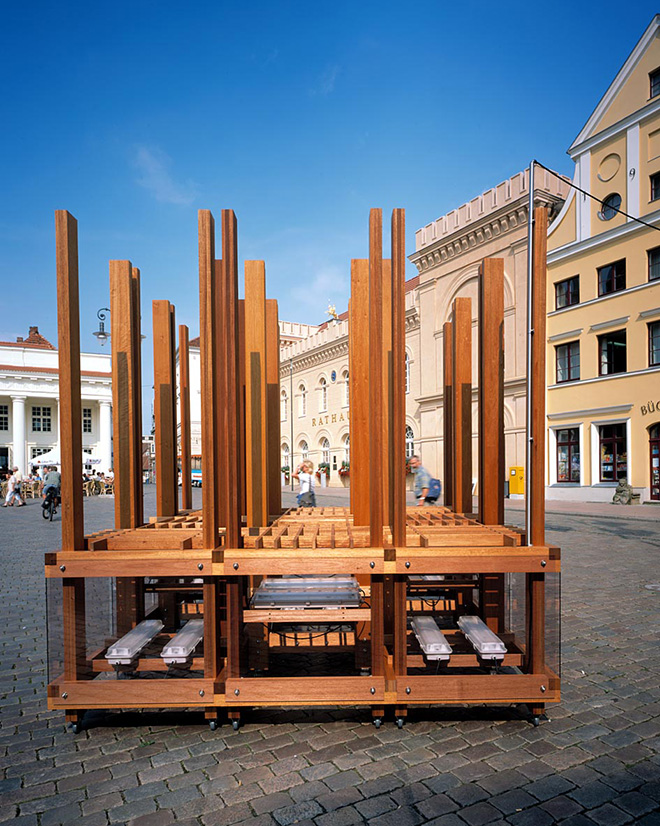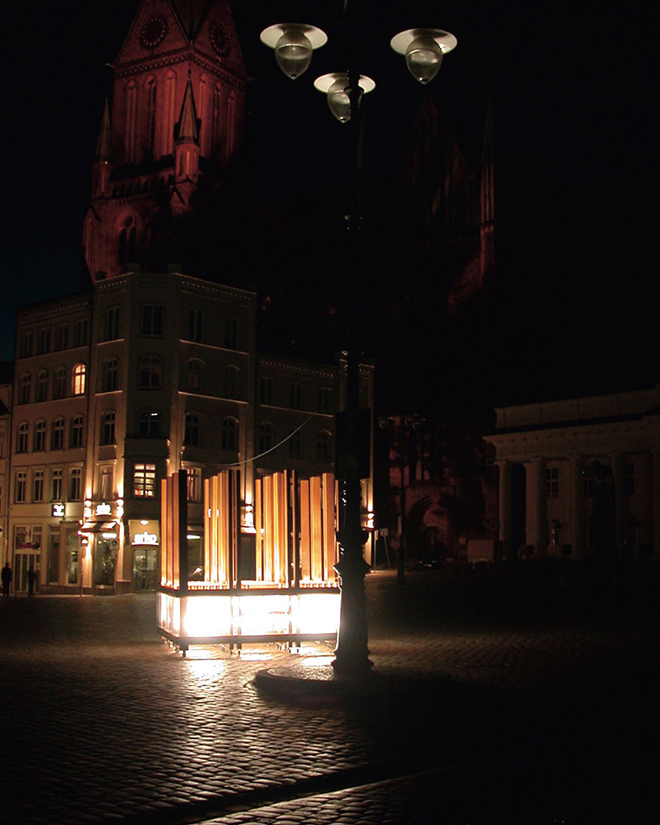City Warehouse Jena with Hologram Façade
Architecture-light-artwork
After years of vacancy, the historic post-and-beam building of the city warehouse in Jena was brought back to life through the step-by-step implementation of the city warehouse concept developed by Ruairí O’Brien. The identity-creating overall concept for the revitalization of the monument connects inside and outside and past, present and future and creates an attractive upgrade of the inner-city living space.
Hologram facade Jena
According to O’Brien’s design, the city warehouse at Jena’s market square presents itself with a hologram façade and new roof, integrated into the existing market ensemble in terms of urban development. After years of vacancy, the historic post-and-beam building was brought back to life through the gradual implementation of the city warehouse concept developed by Ruairí O’Brien. The identity-creating overall concept for the revitalization of the monument links the past, present and future of the city and creates an attractive upgrade of the inner-city living space. The hologram conveys a holistic message that breaks new ground in the living preservation of monuments.
Services: Lph. 1-8 HOAI
Awards: Recognition for the façade award of the city of Jena, recognition “architektourpreis” Chamber of Architects Thuringia.
Hologram façade- Built urban identity
The hologram façade embodies the essence of the city of Jena, it is a tribute to its spiritual and economic identity. The façade as an independent aluminum-steel-glass construction placed in front of the listed building depicting a spatial expression of the city storage concept. The identity-creating “eye” of the building highlights the historically significant structure inside with translucent to transparent effect and protects the valuable center of the monument. The hologram façade of the city warehouse forms a tailor-made connection between contemporary architecture and the historic structure.

